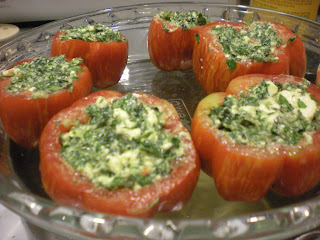 Carrots test our patience as gardeners. Their germination time is long, and weeding them is a pain! I can never tell what's a carrot and what's a weed at the start of the season. But then, the parsley-like leaves begin to develop, and these sweet, orange Popsicle-like roots take form under ground. Once the foliage begins to identify itself, I feel I'm golden. All I have to do is wait a good 2-3 months, and soon, I am digging up loads of carrots.
Carrots test our patience as gardeners. Their germination time is long, and weeding them is a pain! I can never tell what's a carrot and what's a weed at the start of the season. But then, the parsley-like leaves begin to develop, and these sweet, orange Popsicle-like roots take form under ground. Once the foliage begins to identify itself, I feel I'm golden. All I have to do is wait a good 2-3 months, and soon, I am digging up loads of carrots.This year, we had our first successful crop of Danvers Carrots. We planted them in a raised bed which helped tremendously in terms of weed control. To get them out of the ground without breaking them, we saturated the dirt around them with water and pried them up with a shovel. We harvested about 5 lbs. Then, the question was: what should we do with all of them? We also had another pound from my parents' and our CSA boxes.
We thought about juicing them...but then realized how quickly said juice would be consumed in comparison to the amount of patience exuded to grow and harvest them. We thought about pickling them all, but realized we still had 1.5 jars from last year's canning season. So, we decided to pickle most and freeze some. We also used the greens to make carrot-top pesto.
In the end, we canned four quarts and froze three quarts. We used the same recipe that we used last year, except that instead of guallijo peppers, we used chipotles and dried super hots. And again, we sliced them into rounds versus into spears.
We also froze four bags (2/3 cup each) of carrot-top pesto. Apparently, carrot tops have a ton of Vitamin K and chlorophyll~ much more than carrots themselves. People drink carrot top tea (sweetened with honey) as a way to quickly get all the nutrients. We thought about drying ours for tea, but decided we'd probably be more likely to eat them up if they were on pizza ~ hence, carrot top pesto.
 Use all in varying amounts to your taste (and freeze for the winter, if you'd like!):
Use all in varying amounts to your taste (and freeze for the winter, if you'd like!):Carrot tops (chopped)
garlic
walnuts or pine nuts
Parmesan cheese
salt and pepper
honey
olive oil
Put in a food processor and mix to desired consistency. It's that simple.













